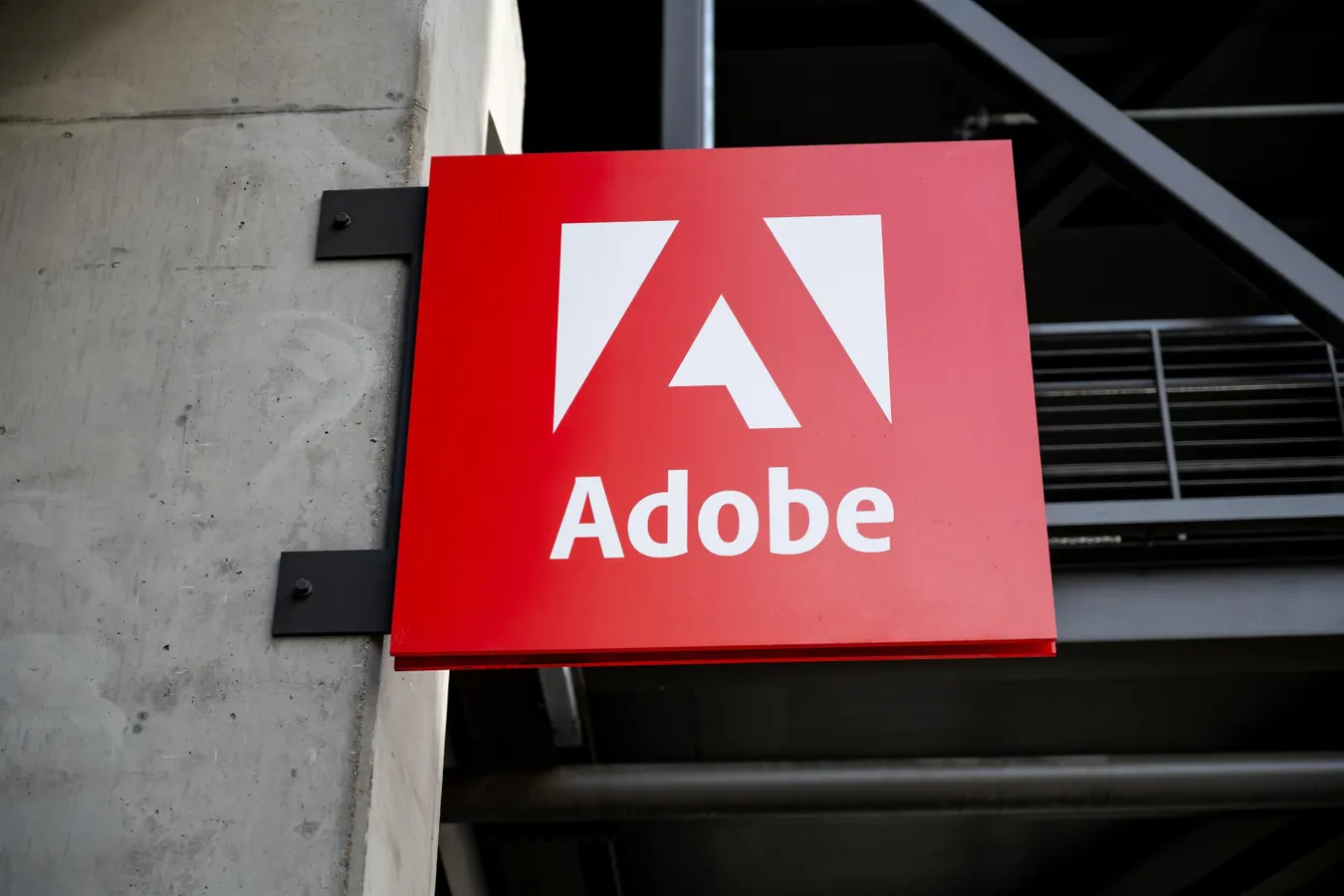By Contributor,Smith Collection,Trefis Team
Copyright forbes

Adobe sign with logo mounted on building exterior, San Francisco, California, September 18, 2025. (Photo by Smith Collection/Gado/Getty Images)
Gado via Getty Images
Adobe stock (NASDAQ: ADBE) is down 22% this year, primarily due to rising concerns centered on rising competition from both lower-cost creative software alternatives and new AI-powered tools, combined with signs of slowing growth in the company’s subscription business. Despite these headwinds, we believe the stock warrants a close look.
Here is why we believe Adobe deserves your attention.
Cash Yield: Few stocks provide a free cash flow yield of 6.6%, but ADBE is one of them.
Fundamentals: A 10.7% revenue growth and a 36.2% operating margin over the past year indicate solid fundamentals.
Valuation: The stock is currently trading at 46% below its two-year high, 6.5% below its one-month high, and at a price-to-sales ratio lower than the three-year average.
Free Cash Flow Yield is calculated as free cash flow per share divided by the stock price. Why does this matter? High cash generation per share allows a company to invest in further revenue growth or distribute dividends, or buybacks to shareholders. For context, Adobe offers a wide array of software solutions globally, including Creative Cloud subscriptions, catering to enterprise clients in the Digital Media, Digital Experience, and Publishing & Advertising sectors.
ADBE Fundamentals
But do these figures convey the whole picture? Read Buy or Sell ADBE Stock to determine if Adobe still possesses an advantage that withstands scrutiny.
This is just one perspective on stocks. Trefis High Quality Portfolio takes a broader approach, aimed at mitigating stock-specific risks while providing exposure to potential upside. In fact, it has comfortably outperformed its benchmark—a combination of the S&P 500, Russell, and S&P MidCap indexes—and has achieved returns exceeding 91% since its inception. Why is that? As a group, HQ Portfolio stocks provided better returns with less risk versus the benchmark index; less of a roller-coaster ride, as evident in HQ Portfolio performance metrics.
MORE FOR YOU
The Point? The Market Can Notice and Reward
The following statistics stem from a high FCF yield selection strategy between 12/31/2016 and 6/30/2025. These statistics are calculated based on monthly selections and assume that once a stock is chosen, it cannot be re-selected for the next 180 days.
Average forward returns over 6 months and 12 months of 10.4% and 20.4%, respectively.
A win rate (the proportion of selections that yield positive returns) of approximately 74% for the 12-month period.
Not overly reliant on market downturns. Even during non-crash periods, this strategy has achieved a 12-month average return of nearly 18% with a 70% win rate.
But Consider the Risk
That being said, Adobe has faced considerable declines during difficult periods. It dropped roughly 72.5% during the Dot-Com crash and 67% during the Global Financial Crisis. In the 2022 inflation shock, the decrease was around 60%. Even less severe declines, such as in 2018 and the COVID-19 pandemic, erased approximately 25% of its value. Therefore, despite its numerous advantages, Adobe is not immune to adverse market conditions.
However, the risk extends beyond major market crashes. Stocks can decline even in favorable market environments—consider events such as earnings releases, business updates, or changes in outlook. Read ADBE Dip Buyer Analyses to explore how the stock has bounced back from sharp declines in the past.
Consistently identifying winners is a challenging endeavor—especially given the fluctuations associated with individual stocks. Instead, look at the Trefis Reinforced Value (RV) Portfolio, which has outperformed its all-cap stocks benchmark (combination of the S&P 500, S&P mid-cap, and Russell 2000 benchmark indices) to produce strong returns for investors. Why is that? The quarterly rebalanced mix of large-, mid-, and small-cap RV Portfolio stocks provided a responsive way to make the most of upbeat market conditions while limiting losses when markets head south, as detailed in RV Portfolio performance metrics.
Editorial StandardsReprints & Permissions



